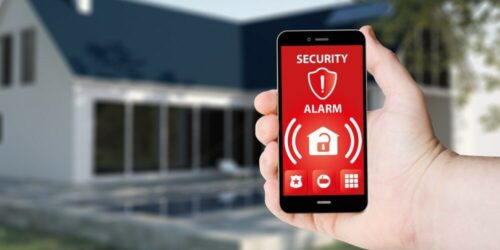
11.23.22 -SSI –Scott Goldfine
Many of the leading-edge technologies enabling the smart home and improving people’s lives are filtering into security devices and systems. This march toward smarter security solutions lies at the heart of the new TMA AVS-01 standard.
Despite the onslaught of of additional competitors and players like Big Tech, private equity, cablecos and telecoms, DIY and others wrought by the smart home, its emergence is nevertheless the most significant catalyst to drive the security alarm industry to new heights since the advent of the digital alarm communicator transmitter (DACT) and mass-marketed residential systems.
For those not up on their history, that translates into about half a century since those paradigm shifts revolutionized electronic security business — swiftly pushing the penetration of U.S. home alarm systems to around 20%.
But by the end of the 20th century that market growth leveled off and stagnated. Fast-forward to the past 10 years, with heightened acceleration the past three to five, and (according to Parks Associates) the residential system market penetration has soared to 36% of U.S. homes.
Thank the rise of the smart home for that, along with all those deep-pocketed new-comers delivering a marketing blitz to consumers to expand the opportunities for everyone — especially those security firms that already have a foothold (so long as they embrace it and adapt to this new landscape).
If your company has not already done so, it’s time to evolve into residential customers’ total technology solutions providers.
Studies show security companies remain the most trusted of all services providers to the home. Especially in the wake of COVID, the safety, well-being and peace of mind at the core of our industry’s offerings assuage consumers’ chief concerns — and strike an emotional connection, bond and loyalty.
While convenience and lifestyle-enhancement have also become of paramount importance and appeal, security can still lead the conversation and serve as the gateway to unlimited smart home controls. As they say, never forget where you came from.
For our industry that means no matter how sexy other smart home elements are or how ubiquitous they become, protecting lives and property remains mission No. 1.
What’s super exciting is many of the leading-edge technologies enabling the smart home and improving people’s lives are filtering into security devices and systems — both in terms of usability and efficacy. This march toward smarter security solutions lies at the heart of The Monitoring Association’s Alarm Validation Scoring (TMA AVS-01) standard.
Beginning in 2020, the AVS initiative was established to standardize methods for calculating an alarm score that results in a repeatable metric that estimates the validity of a burglar alarm activation using historical and real-time data. The objective is for this standardized scoring metric to assist public safety departments with their alarm response policies.
The standard defines five alarm reporting categories: Intrusion Level 0 (no dispatch needed); Level 1 (basic default); Level 2 (confirmed or high probability of nonauthorized human presence); Level 3 (confirmed threat to property); Level 4 (confirmed threat to life).
AVS-01 promises not only to reduce unnecessary alarm dispatches but also deliver crucial information that allows for higher quality and better prepared response. According to Immix Protect Global Director of Operations Mark McCall, chair for the AVS-01 Committee, as of this writing public comments were being reviewed. Once that process is complete the standard will be published, likely before the end of 2022.
While many central station automation vendors have committed support for the first half of 2023 and monitoring centers can begin following AVS protocols any time, some figure to wait for an official UL listing.
“I expect we’ll see slow adoption at the beginning of next year ramping up quickly for the second half and into 2024,” he told me.
In a nod to my opening assertion, Rapid Response’s Morgan Hertel, TMA’s current president who also contributes to SSI’s Monitoring Matters, says, “AVS-01 is arguably the biggest advancement in the alarm industry since the digital dialer was created in the 1970s. Fundamentally, not a lot has changed in the types of alarms we deliver to first responders in decades. While we have made monumental improvements on reducing calls for service with standards like CP-01 an CSV-01, this is the first standard to address additional data elements to help first responders manage their assets in the field using consistent methods and information across all alarm companies and monitoring centers.”
As we boldly forge ahead in the smart home era, let’s ensure alarm response is equally as advanced.
